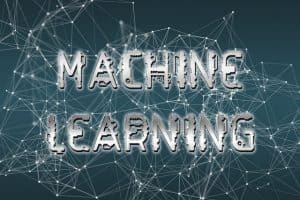
Machine learning is the only way to deliver personalized customer experiences at scale, which spark emotion because those are the experiences that resonate.
Spatial disorientation can happen when one’s perception is diametrically opposed to reality, such as an underwater diver convinced up is down regardless of what a depth gauge may read. Safety depends on trusting the instruments, no matter how counter-intuitive to one’s senses.
It’s analogous to marketers convinced that building an emotional connection with a customer precludes the use of machine learning. How can an insensible machine infuse emotion, a human feeling, into a meaningful customer experience?
See also: Your Customers Interact with Your Brand in Real-Time, It’s Time You Follow Suit
Like a diver trying to surface, marketers must trust the instruments even if doing so is counter-intuitive to all of their training and instinct. As difficult as it might be to abandon a gut feeling, the use of machine learning is the only way to deliver personalized customer experiences at scale, which spark emotion because those are the types of experiences that resonate.
Survey says: Emotion drives revenue
In a 2020 Content Fitness Report from PAN Communications, survey results validate an internal struggle to balance the creation of emotional campaigns with using data and analytics rather than rely on humans to create a “humanized” experience.
In the survey, nearly 20% of marketers said they can live without data and analytics skillsets on their team, a significant increase from just a few years ago when nearly everyone surveyed recognized the importance of data and analytics to create a personalized customer experience. Digging deeper, the reason for this becomes clear: 31% of survey respondents report “significant profit gains” from emotional campaigns, nearly double that of “rational” campaigns and a 5% increase over those marked by both emotion and rationality.
Therein lies the misconception that emotion and data are like oil and water. In reality, the more automated a process, and the more it is driven by analytics, the closer marketing gets to the humanization of the experience for the consumer.
An emotional campaign = Personalization, relevance
When marketers in the survey noted significant profit gains from “emotional” campaigns, what they’re referring to is a personal customer engagement that is meaningful to the customer, usually apart from the price of a product or service. It’s the corner store experience, where a proprietor is dialed into each customer’s preferences and behaviors and always seems to know what a customer needs before the customer does.
In an Infosys study on personalization in retail, 86% of customers surveyed who have experienced a personalized CX said that it influences what they purchase to some extent, with 25% claiming it has a “significant” influence on purchasing.
The mistake many marketers make is they believe they need to hire data scientists to create models that approximate personalization. The reason this is the wrong approach is that models based on fluid data become stale over time – this is true for segmentation models, predictive models, and optimization models. Business goals and customer behaviors change; a model configured to drive a certain metric becomes outdated as soon as a new metric comes into play, or priorities change. This approach fails to account for relevance as a key part of an emotional, personalized connection with a customer. And relevance requires that a marketer moves at the cadence of the customer throughout an omnichannel journey. Furthermore, using offline models fails to address the influx of data in the time it takes to operationalize the model.
The reason automated machine learning approximates a human connection better than humans can is that it delivers real-time personalized experiences at scale.
What is automated machine learning?
Machine learning may apply analytics to every conceivable piece of customer data. When machine learning is applied to a single customer view that incorporates everything there is to know about a customer – behaviors, preferences, ID’s, devices, etc. – fleets of smart data models can be optimized against any metric, presenting a next-best action that is always optimized for a customer journey at the precise moment it is rendered.
This is the power of automated machine learning that is beyond the reach of data scientists. Code-free models tuned to unearth a next-best action independent of channel are, unlike humans, capable of keeping up with the countless permutations of a customer journey. A next-best action one second – an email offer, a notification, a reward, etc. – may be entirely different the next depending on an action or behavior taken by the customer, new data, or a new prediction of the customer’s intent. This guarantees that every next-best action is relevant to the customer journey, which is the foundation of a personalized customer experience and emotional campaign.
Models that must instead be coded will introduce human judgment into the equation, with assumptions based on personal experiences that may not be shared by a target audience or an individual customer. Automated machine learning takes humans out of the equation, and in-line operational, self-training, self-testing models turn a manual process marked by guesswork into a seamless, sophisticated process that delivers personalized experiences that resonate with an individual customer.
Data and analytics make personalization possible
The significant profit gains, as referenced in the survey, are made possible because marketers are leaving the tactical steps of managing customer relationships to automated machine learning, thus empowering them to manage at a strategic level.
As counter-intuitive as it might seem, embracing data and analytics and advanced technologies such as automated machine learning is the most effective way to deliver a personalized, relevant customer experience on any channel that is always in the cadence of a unique customer journey. Humans may have the best intentions but driving significant profit gains depends on looking at data and analytics as an ally rather than a foe.






























